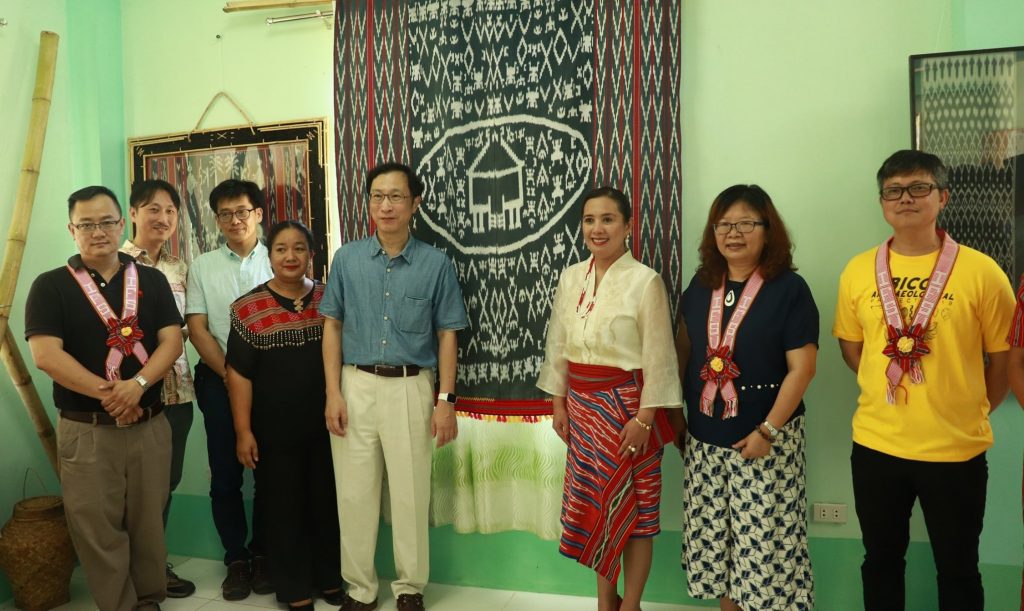Organization
Ifugao Rice Terraces as Globally Important Agricultural Heritage System Research and Development Center
Best Practice Focus Area/s
Strategy; Measurement, Analysis, and Knowledge Management; Human Resource
Year Implemented
This is a GBPR entry
Summary
With its current capacity-building project, the Ifugao Satoyama Meister Training Program (ISMTP), IFSU employed community-based human resource development among academicians and indigenous peoples. This IFSU Project is an outreach and extension service to the indigenous communities of Ifugao. Among the sectors served by the project are teachers from the Department of Education Schools Division of Ifugao, young professionals, farmers, tour guides, and entrepreneurs.
With Community-based human resource development, the project interfaced theory and practice among the IFSU mentors and the sectors they served. This kind of interaction merged two perspectives: theory from the academe and practice from the community. It paved the way for IFSU mentors to learn the conditions on the ground while community members acquired theories from the mentors.
Background and Problem
Located in indigenous territory, the Ifugao State University (IFSU), through its Ifugao Rice Terraces as Globally Important Agricultural Heritage System (IRT-GIAHS) Center, has been at the forefront of heritage conservation in Ifugao. The center developed innovative approaches and practices in localizing, mainstreaming, and internationalizing heritage conservation with its past and current programs and projects.
Among recent challenges that needed to be addressed was the slow erosion of Indigenous Knowledge Systems (IKS). In 2001, the Ifugao rice terraces were included in the UNESCO World Heritage Committee’s List of World Heritage in Danger. In a study conducted by the Save the Ifugao Terraces Movement (SITMo), a local non-government organization (NGO) based in Ifugao, the following are the significant reasons why the terraces have deteriorated:
- The living rice culture that maintains the terraced fields is under grave threat from a host of powerful man-induced forces.
- Traditional resource management practices have been disrupted by the introduction of an open-market economy which has caused the out-migration of young people and the loss of the conventional cooperative labor required to maintain the irrigation system and terrace walls.
- The imposition of national policies on local government and the pressure exerted by Western religions have marginalized the traditional role of indigenous knowledge holders in managing the daily lives of the community and the environment.
- The introduction of new high-yield rice varieties, non-endemic flora, and fauna has disrupted the fragile ecosystem and traditional agricultural practices.
Government interventions have been focused on infrastructure development that has led to site degradation.

Solution and Impact
The first project is the Ifugao Satoyama Meister Training Program (ISMTP), a 6-year international twinning project between the Province of Ifugao and the Ishikawa Prefectural Government of Japan. ISMTP is a 1-year training course primarily aiming to capacitate local heritage communities through research, product development, international exposure, and lecture series on different themes and topics. With ISMTP, at least 100 individuals from four heritage municipalities of Ifugao graduated as meisters. For almost six years since 2015, the meisters have conducted at least 100 community-based research on different themes. The 100 meisters now serve as a formidable force in advancing sustainable practices for the conservation of the Ifugao Rice Terraces (IRT).
ISMTP focuses on capacity building, research, and project development. ISMTP trainees are community members in the four GIAHS areas of Ifugao: the municipalities of Banaue, Hungduan, Mayoyao, and Kiangan. The trainees come from different backgrounds, including weavers, teachers, entrepreneurs, farmers, government officials, and employees.
GIAHS Mainstreaming
The ISMTP contributed to mainstreaming plausible solutions to the problems and challenges in the IRT. The people behind the ISMTP tirelessly worked with international and local partners to conserve the IRT.
IFSU, through the IRT-GIAHS Center, applied and was accepted into the International Platform for Satoyama Initiative (IPSI). The highlight of the application was the value of mentoring among academicians, farmers, entrepreneurs, and other sectors.
ISMTP has been organizing the Annual Philippine-Japan Forum since 2015 to highlight both countries’ efforts in heritage conservation. Further, a yearly international exposure is hosted by both countries. As a result of their 1-year rigorous training, meisters embodied the lives of a true Satoyama meister. Most meisters are now implementing their projects and even practicing mentoring within their communities.
Community-Based Researches
To date, at least 100 meisters have graduated from the training program, and a total of 100 research on IRT, biodiversity, agriculture, and other themes were produced by the Center. IFSU mentors and mentees have been presenting their research in local and international fora.
One added value of the project is that it trained farmer-trainees to conduct research. Thus, farmers who applied for the training were able to conduct research projects relevant to their communities. From the different research projects, a Battikul Rice Field Production was initiated, rice brew was introduced, and heirloom rice baby food was developed. Moreover, the socio-economic aspect of weaving Ifugao textiles was also studied, resulting in the recommendation for higher wages and benefits for traditional weavers. Lastly, close mentoring led to payoh (rice fields) reconstruction.
The meisters’ tedious work results contributed to the Philippine Country Report aimed at delisting the country from the List of Endangered Heritage Sites by UNESCO.
Milestones/Next Steps
Ifugao holds two global heritage distinctions: from the Food and Agriculture Organization of the United Nations (UNFAO) as GIAHS in 2004; and the United Nations Educational, Scientific and Cultural Organization (UNESCO) as a World Heritage Site in 1995. UNESCO proclaimed the Hudhud Chants as a Masterpiece of the Oral and Intangible Heritage of Humanity in 2001 and Punnuk in 2015.
In 2014, IFSU created the IRT-GIAHS Center as its heritage conservation arm. Since its creation, IRT-GIAHS implemented several programs and projects focusing on the Ifugao Rice Terraces. Currently, the center hosts two current projects geared towards perpetuating the important agricultural heritage system of the indigenous peoples of Ifugao.
